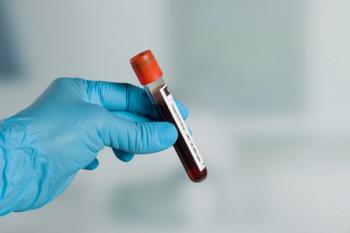
Pharmacy Practice in Focus: Oncology
- December 2020
- Volume 2
- Issue 6
Redefining the Management of Anemia in Patients With Cancer
In the 2020 Directions in Oncology Pharmacy® conference session, redefining the management of anemia in patients with cancer was discussed.
PTCE would like to acknowledge American Regent for their generous support of pharmacist education.
It is estimated between 30% and 90% of patients with cancer develop anemia related to chemotherapy, radiation, bleeding, hemolysis, neoplastic bone marrow infiltration, renal or hepatic failure, or even in the absence of these factors. Anemia may contribute to fatigue, lethargy, dyspnea, anorexia, and difficulty concentrating, and is a negative prognostic indicator for disease progression, survival, and overall risk of death. Correction of anemia is associated with improvement in health-related quality of life and fatigue. Syeda Saba Kareem, PharmD, BCOP, shared her insights on the management of anemia in the 2020 Directions in Oncology Pharmacy® conference in a session titled The Relationship Between Anemia and Cancer: Opportunities for Pharmacists to Improve Patient Outcomes.
Dr Kareem introduced the topic with a review of the pathobiology and evaluation of anemia before diving into guidelines for management of anemia. She explained red blood cell transfusions, erythropoiesis- stimulating agents (ESAs), and iron supplementation are the cornerstones of anemia management. Although transfusions rapidly restore hemoglobin levels, they also put patients at risk for iron overload, volume overload, pathogen transmission, and alloimmunization. Dr Kareem emphasized that ESAs are indicated for chemotherapy-induced anemia and should not be used for patients with cancer-induced anemia before reviewing dosing strategies for epoetin alfa and darbepoetin alfa. She then summarized the risks for disease progression, increased mortality, and thrombosis with ESAs. Dr Kareem noted key points of guideline-based usage of ESAs, including initiating therapy when hemoglobin is less than 10 g/dL, targeting goals of improvement in anemia-related symptoms, and avoiding transfusions rather than a set hemoglobin level. She explained there is similar efficacy among the different agents and choice of agent is based on availability, cost, convenience, and personal choice of the physician and patient.
Dr Kareem then described the role of iron supplementation to maximize the efficacy of ESAs. Determining if a patient will benefit from iron supplementation should be based on both serum ferritin and transferrin saturation. Most patients benefit from iron supplementation except for patients with a transferrin saturation over 50% or a ferritin over 800 ng/mL. She highlighted advantages and disadvantages of several oral and intravenous iron products. Historically the risk for infusion reactions and anaphylaxis limited use of intravenous iron products; however, several products are now on the market that do not have a black box warning for anaphylaxis, including iron sucrose (Venofer), ferric carboxymaltose (Injectafer), and ferric derisomaltose (Monoferric). Dr Kareem concluded the session by reviewing key aspects of pharmacists’ roles in managing patients with cancer and anemia, including:
- Identification of patients who may benefit
- Optimizing pharmacologic treatment
- Monitoring patients’ response to therapy
- Educating patients and health care providers on the risks and benefits
- Developing organization-based policies and guidelines to manage anemia
- Facilitating reimbursement
Articles in this issue
almost 5 years ago
PARP Inhibitors Gain Utility in Multiple Malignanciesalmost 5 years ago
Utilizing Companion Diagnostics to Drive Clinical Decisionsalmost 5 years ago
Pharmacists’ Roles in Addressing Oncology Biosimilar Challengesalmost 5 years ago
CDK4/6 Inhibitors Are Game Changers in HR+/HER2- Advanced Breast CancerNewsletter
Stay informed on drug updates, treatment guidelines, and pharmacy practice trends—subscribe to Pharmacy Times for weekly clinical insights.













































































































































































































